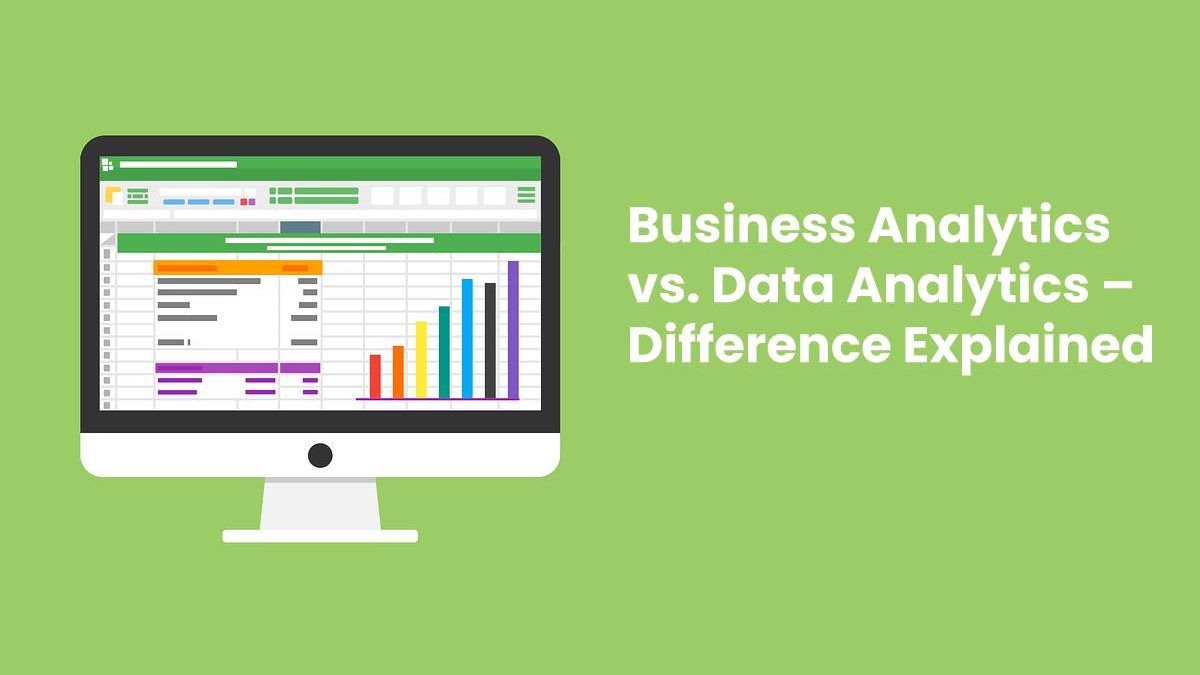Business Analytics vs Data Analytics
In today’s world, data is changing everything. And the amount of data we use, is also rising by the second. Considering this high amount of data, it is imperative to have the right tools or software to manage the same. Any form of raw data is basically unstructured information that can be detrimental. And this is where analysts come in. There are two types of analyst which are Data analysts and then there are business analysts.
However, they have similar names – but the work and genre of working is totally different. The similarity is that both of these formats include working with data. The analytics involves manipulating data for getting maximum benefits. The idea is boosting the overall business and creating growth.
Business Analytics
This form of analytics lays emphasis on the broader picture of business profits and implications. The idea is that business analytics drives the roadmap fr any business and getting actions from them. So whether or not a company should have a new line of products or if they should develop or take up one project over another. These are critical attributes of the business analytics.
Business analytics is also defined as a blend of skills, tools, and applications, which help a commerce or trade to quantify or measure the effectiveness of core business functions. It can help a variety of business sectors and improve them like:
- Marketing
- Customer service
- Sales
- Information Technology
- And many more…
Data Analytics
This field of work includes combing massive datasets and predicting trends and patterns. In simple terms, it means drawing conclusions based on patterns and trends. It can be related to:
- Hypotheses
- Providing support for various kinds of business decisions
- Using data-based insights
Along with this, data analytics also makes an attempt to answer a series of different questions like:
- The influence of how seasonal factors and weather changes influences customer preferences
- It can also help address issues like how a customer could turn into a competitor
On the whole, data analytics encompasses includes a variety of techniques and approaches. The field of data analysis expands to but is not restricted to data science, data mining, big data analytics, data modelling and much more.
Qualifications required
There are different sets of qualifications required in both the fields. For example, a data analyst should have deep-seated knowledge in any of the subjects like Mathematics, Statistics and even Computer Science. Without the three, it is not possible to excel in this field. Bachelors degree with any STEM field is an added advantage. Expertise in SAS along with skills like R, Python, etc. and relational database management is mandatory for this field. Being familiar with a series of data analysis tools is an added advantage like data visualization, crawlers to help extract big data, get into databases, etc.
The qualifications for a business analyst on the other hand are slightly different. Business analytics make use of data that is practical. It helps big and small companies make concrete decisions. This form of analytics is rooted in solving problems. They hope to improve efficiency through a combination of data-driven insights. Along with this, they also use a range of managerial strategies and clear communication. These insights are then derived from data so that they can be used at the fore-front of a project or even data pipeline. Thorough knowledge one statistical tools and programming is required for this field.
There are four major kinds of analytics which are:
Descriptive Analytics
Descriptive analysis or statistics makes use of or puts together raw data, which is then transformed into an easily understood form for human beings. It is used for making descriptions of complex matter.
Diagnostic Analytics
This form of analytics is used for digging deeper into an issue at hand. Doing so helps identify the source of the problem..
Predictive Analytics: This is used in businesses for forecasting future trends along with estimations of probabilities.
Prescriptive Analytics
Using this analytics helps explain the detailed processes in a situation. Prescriptive analysis is used by Uber drivers for getting the easier route from Gmaps. So it is used for every day too.
In simple terms, the different between these two is what the two do with data. For example, businesses use it for strategic decisions while data analytics focus more on gathering and manipulating data and convert their findings into digestible insights. At the end of it, analyzing remains the goal.
Kamran Sharief
Related posts
Sidebar
Recent Posts
The Rise of Legal Tech Startups: What Law Firms Need to Know
Introduction The legal profession, often rooted in tradition and resistant to change, faces a technological revolution. Legal tech startups are…
Shiba Inu vs. Dogecoin: The Battle of the Meme Coins
In the realm of cryptocurrency, there has been an ongoing battle between two popular meme coins, Shiba Inu and Dogecoin….




Review Business Analytics vs. Data Analytics – Difference Explained.